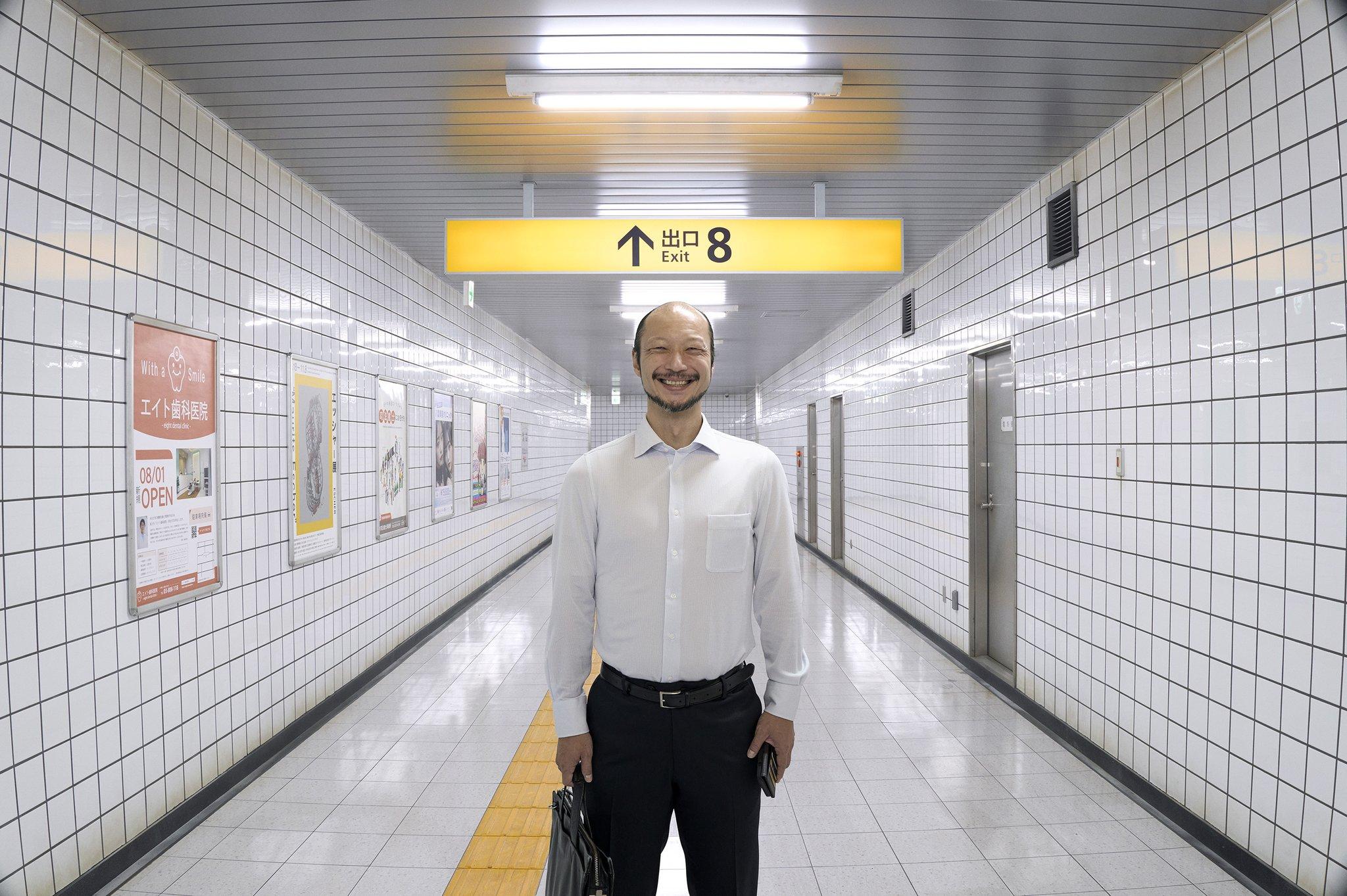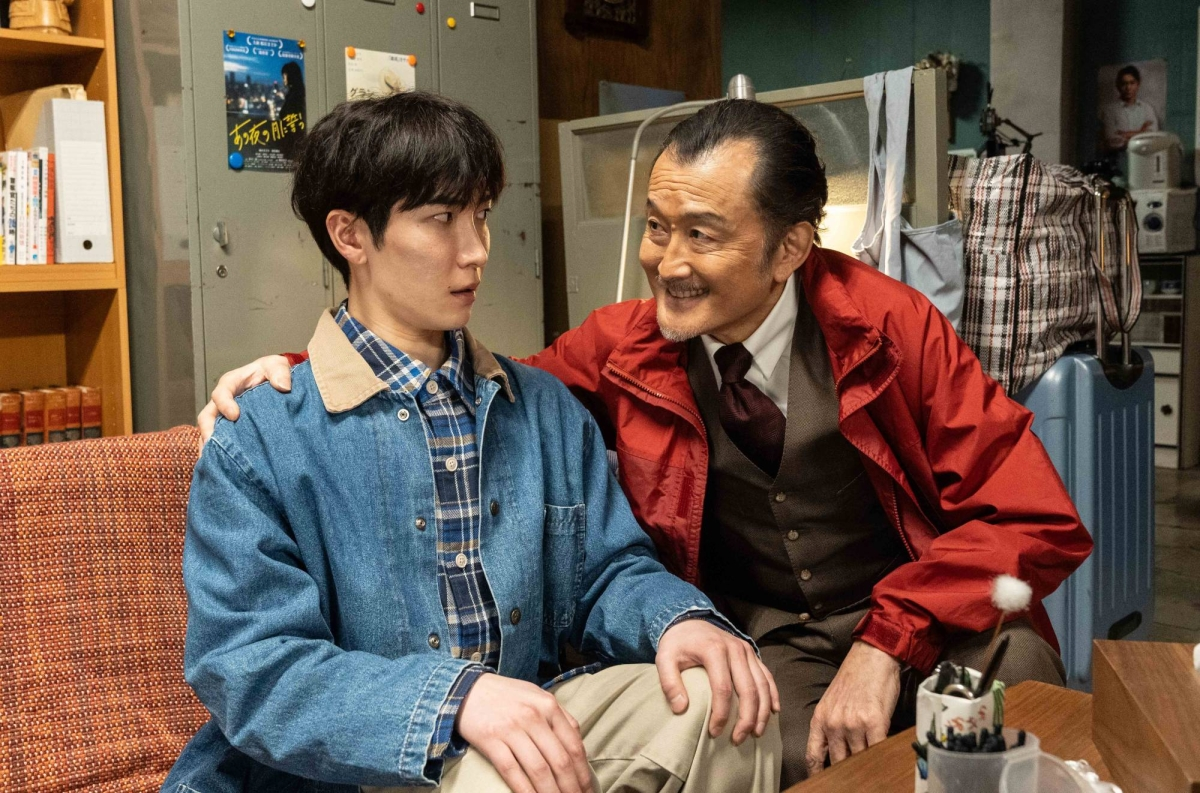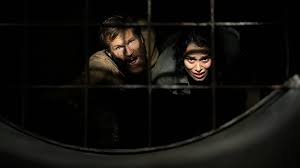Liminal spaces are transitional places that often feel strangely surreal or deeply eerie due to their emptiness, which can be disorienting and deeply unsettling, provoking fear of the unknown. The fascination with liminal spaces took off online through a creepypasta after a 2019 4chan post showing a mid-renovation Hobbytown would become known as The Backrooms, an extradimensional realm composed of an endless series of rooms that are difficult to escape and haunted by a sense of being stalked. YouTuber-turned-filmmaker Kane Parsons transformed The Backrooms into a series of viral online shorts, a project that has since evolved into an A24-produced film directed by Parsons, currently in production. The liminal spaces craze would even pave the way for video games centered around the concept, such as KOTAKE CREATE’s first-person adventure game The Exit 8.
The game places players in a Japanese metro station passageway, where their goal is to spot anomalies to escape the looping space and reach the final exit, Exit 8. If done incorrectly, players are sent back to the beginning at Exit 0, forced to repeat the cycle. Despite its low-budget development, The Exit 8 proved a critical darling, with players praising it for its simple yet addictive gameplay and its minimalist, eerily atmospheric blend of psychological horror.
Thus, a feature film adaptation has understandably sparked considerable interest and anticipation, especially following its positive reception at the 2025 Cannes Film Festival and its recent U.S. premiere at Beyond Fest at American Cinematheque. However, there were still some concerns. Video games are widely recognized as an art form, yet their movie adaptations have a notoriously shaky reputation. Filmmakers often struggle to translate interactive experiences to the screen, frequently stripping away what made them appealing while often suffering from weak writing and poor direction. Yet, given director Genki Kawamura’s track record as a writer and producer, along with his previous film, A Hundred Flowers, there remained a sense of hope that this could succeed. Fast forward to the feature itself; Exit 8 is not only a breakthrough for video game cinema but also builds on what made the original game compelling, expanding it into a thematically entrenched psychological horror film.

The plot follows a man traveling by train to visit his hospitalized ex-girlfriend, who is pregnant, and they are both faced with the dilemma of whether they want to have this child. However, upon stepping off the train, he finds himself trapped in an infinitely looping subway passageway. For him, escape lies in following a strict set of rules: spot the anomalies and immediately turn back; otherwise, keep pressing forward. If done correctly, Exit 8 awaits. Make a mistake, and it’s right back to the beginning.

From the outset, Exit 8 establishes a sense of repetition that may or may not resonate with some viewers, as the movie unfolds at a leisurely pace. However, to the credit of Genki Kawamura and co-writer Kentaro Hirase, they cleverly play with this idea. There’s a relatable mundanity in the act of traveling from one location to another in pursuit of something important. Hence, subverting this by being endlessly trapped in a single location challenges the very sense of normality that allows viewers to connect with the lead’s struggle to escape and to wonder what anomalies could be the key to the exit.
It’s within this setting that the audience is thrust into a nightmare of pure psychological horror, which Exit 8 excels at tremendously. There are jump scares, but they are used sparingly and effectively. Much of the film’s horror is rooted in tension and atmosphere. Being confined to a single endless location, especially a subway passageway, evokes a powerful sense of dread and claustrophobia. Not only that, the feeling of being watched in an isolated space only heightens the ever-growing anxiety. Adding to the creepiness, the protagonist comes to realize he isn’t alone, encountering an initially stoic walking man whose expression later turns into a horrifying smile, and a child who appears to be lost.

Because the original video game contains little to no story, narrative expansion becomes essential for this concept to fully flourish in a film adaptation. With that in mind, Exit 8 is arguably just as much a drama as it is a horror film. Perhaps it would even be apt to call it a psychological drama with horror elements. Despite its straightforward premise, it’s quite a thematically rich feature with meticulous attention to detail. Though its characters remain nameless beyond basic descriptions, the film is, at its core, deeply human.
The looping subway underpass serves as a metaphor for the mundanity of modern society, reflecting our social anxieties as we carry out our daily routines within an ever-expanding capitalist landscape, all while feeling an increasing sense of disconnection from one another. Even the number “8” within Exit 8 visually suggests a looping cycle. The lost man’s entrapment in this passageway forces him and the viewers to confront the realities of social isolation and an ever-deepening alienation in the monotonous cycle of daily life.

Arguably, the film’s most prevalent theme is fatherhood, specifically the main character’s fear of responsibility in an unplanned pregnancy and the moral dilemma of his part in whether his ex-girlfriend will terminate the pregnancy or have the baby. Some critics have interpreted this element of the movie as promoting a pro-life message and adopting an anti-abortion stance, despite director Genki Kawamura’s insistence that this was not his intention. While art is inherently subjective, it can be argued that this interpretation oversimplifies what Exit 8 conveys about the complexities and uncertainties of becoming a father.
Rather than offering a “definitive” answer to unplanned parenthood or making a pointed political statement on the matter, Kawamura and Hirase instead utilize this scenario of impending fatherhood to explore vulnerability and responsibility, linking it once again to the broader theme of social disconnect in a monotonous cycle. The protagonist is initially portrayed as cold and detached from the world around him, as seen when he witnesses a salaryman rudely scolding a woman on a subway train for her crying baby, and tunes it out by listening to music on his phone. Even when his ex-girlfriend breaks the news to him about her pregnancy and her uncertainty about what to do, he reacts with apparent passivity. It’s as if the system he lives and works within has conditioned him to adopt a detached attitude to human life and social stagnation. Everything changes once he becomes trapped in the corridor, which functions like purgatory and serves as a manifestation of his anxieties and guilt, testing his sanity and ultimately prompting self-reflection.
Ironically, it is his time in this maze that finally triggers the introspection that humanizes him, prompting him to reflect on his regrets and self-doubt. There’s a desire to move on, yet he knows he must face his responsibility in this matter. He wants to reconcile with his ex-girlfriend, but fears he’s already blown his chance. He becomes open to the idea of fatherhood, yet fears he may not be able to live up to it. In one particularly touching moment of human vulnerability, he speaks with his girlfriend over the phone, in which he confides his self-doubts about becoming a father. A fear heightened by his recent failure to show human decency, as he passively ignored a cruel salaryman berating a mother and her child on the train. The idea of fatherhood and humanity are explored further with the relationship the lost man eventually forms with a lost child he encounters in the space.

Through his bonding with this little boy, the protagonist demonstrates personal growth, proving himself capable of selflessness, a realization that also shapes his growing openness to rekindling his romantic relationship and becoming a parent. It is also here where the film taps into the feeling of abandonment, revealing the lead never knew his father, who walked out on him during childhood and never saw him again, an experience that likely contributed to his insecurities. He even takes that to heart when he reflects on his initial thoughts of abandoning his ex-girlfriend, who now faces a decision about her pregnancy. There’s even an implication that the walking man, who eventually receives a devoted section, symbolizes a father who engaged in infidelity and abandoned their child, and became a detached figure.
The anomalies also factor into the core themes. An out-of-the-ordinary occurrence interrupts the limbo-like cycle, which otherwise repeats if overlooked. In turn, this ties into the lost man’s inability to make decisions, whether regarding his responsibilities or his own character. The corridor serves as a test for his internal conflicts in modern life, where confronting the truth becomes the key to moving forward.

The performances significantly elevate Exit 8 as both a compelling horror movie and a profound drama. As the lost man, Kazunari Ninomiya showcases his range as an actor, portraying a fragile individual faced with a terrifying situation, while also demonstrating his potential for personal growth. Despite what the promotional material suggests, Yamato Kochi’s walking man offers plenty more beyond his simple stroll and chilling grin. Even with limited screen time, Nana Komatsu delivers a heartfelt portrayal as the woman who is grappling with the dilemma of her pregnancy. Child actor Naru Asanuma shows promise for a bright career with his portrayal of the boy. Although only briefly featured in the movie, Kotone Hanase shines in an effectively jarring scene as a seemingly lost schoolgirl.
Equally outstanding is the film’s production design. Despite most of the movie taking place in one location, the repeating subway passageway serves not only as an eerie, hellish setting but also as a space meticulously crafted with attention to detail, with occasional instances of special effects, both practical and CGI. The effective use of lighting and sound design also contributes to the atmosphere, complemented by Keisuke Imamura’s stellar cinematography and a terrific music score by Yasutaka Nakata and Shohei Amimori. There’s even a great use of Maurice Ravel’s orchestral composition “Boléro.”
Exit 8 offers a sense of optimism for what future video game cinema is capable of achieving. Furthermore, it establishes itself as a remarkable film in its own right. It balances being terrifying while also delivering a surprisingly heartfelt, dramatic core.





